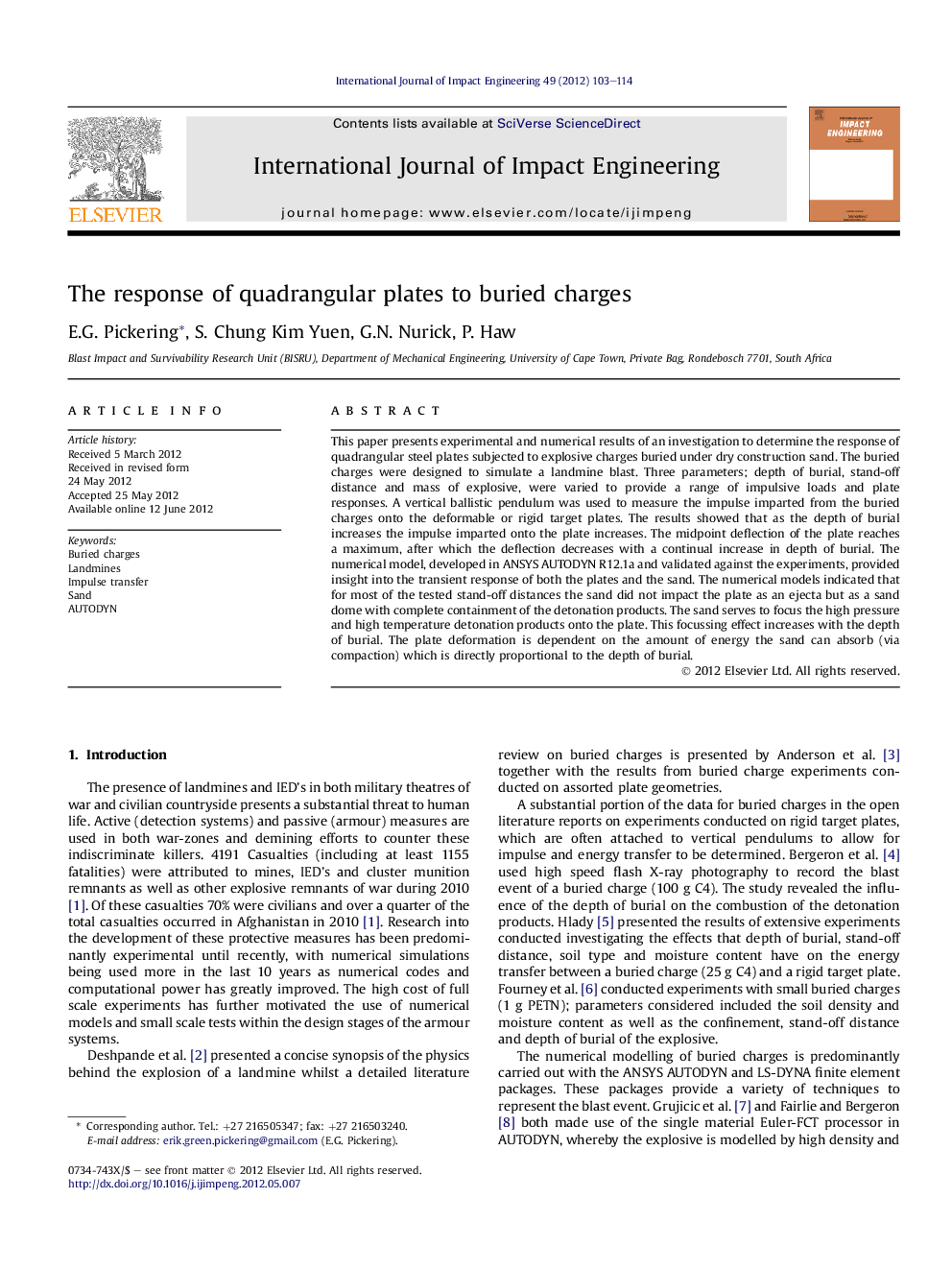| Article ID | Journal | Published Year | Pages | File Type |
|---|---|---|---|---|
| 783083 | International Journal of Impact Engineering | 2012 | 12 Pages |
This paper presents experimental and numerical results of an investigation to determine the response of quadrangular steel plates subjected to explosive charges buried under dry construction sand. The buried charges were designed to simulate a landmine blast. Three parameters; depth of burial, stand-off distance and mass of explosive, were varied to provide a range of impulsive loads and plate responses. A vertical ballistic pendulum was used to measure the impulse imparted from the buried charges onto the deformable or rigid target plates. The results showed that as the depth of burial increases the impulse imparted onto the plate increases. The midpoint deflection of the plate reaches a maximum, after which the deflection decreases with a continual increase in depth of burial. The numerical model, developed in ANSYS AUTODYN R12.1a and validated against the experiments, provided insight into the transient response of both the plates and the sand. The numerical models indicated that for most of the tested stand-off distances the sand did not impact the plate as an ejecta but as a sand dome with complete containment of the detonation products. The sand serves to focus the high pressure and high temperature detonation products onto the plate. This focussing effect increases with the depth of burial. The plate deformation is dependent on the amount of energy the sand can absorb (via compaction) which is directly proportional to the depth of burial.
► Rigid and deformable plates are subjected to 8–22 g PE4 charges buried in dry sand. ► Depth of burial, mass of explosive and stand-off distance are investigated. ► Numerical models of the experiments are developed in ANSYS AUTODYN. ► For the test ranges the maximum plate deflection does not occur at maximum impulse. ► The numerical models show good correlation with buried charge experiments.
